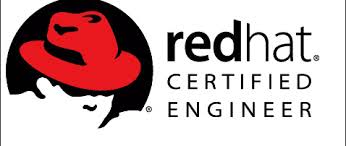RedHat Certified Engineer – RHCE Training
RHCE TrainingRed Hat Certified Engineer (RHCE) is a performance-based test that measures actual competency on live systems. Called the “crown jewel of Linux certifications,” RHCE proves an individual’s ability to configure networking services and security on servers running a Red Hat OS. RHCE was recently named the hottest certification in all of IT by CertCities.com.
The certification exam consists of one part conducted in a single day session. The exam is performance-based, meaning that candidates must perform tasks on a live system, rather than answering questions about how one might perform those tasks.
The RHCE Exam consist of one section lasting 3.5 hours.
In order to pass the Red Hat Certified Engineer exam, candidates must meet all of the following requirements:
70 percent or more on the RHCSA-level skills.
70 percent or more on the RHCE-level skills.
These last two requirements enable RHCEs to demonstrate that they possess both RHCT-level and RHCE-level skills, as well as enabling a person who only has RHCT level skills to earn RHCT if they pass the required competencies.
Benefits to earning a Red Hat certification:
Recognition in the industry
Increased customer confidence
Proof of knowledge and skills
Certification verification tool for employers
Use of the certification logo on business cards
Ability to access multiple Red Hat Certificated Professional online communities (like Facebook and LinkedIn)
Access to Red Hat Certification Central website
Download certification logo
Purchase Red Hat certification gear
Red Hat Certified Professionals forum
Online profile listed under your certification number
Red Hat Certified Professional job search
Special offers on training and events
Introduction to Linux Operating System
History & Architecture of Linux
Features of Linux
File system Hirerachy
Understand Linux file system hierarchy and pathnames
Install Linux graphically
Install Red Hat Enterprise Linux and configure the system with firstboot
Text based installation
Customizing packages
Post installation of RHEL 6
Network Based Installation
Get started with bash
Understand basic shell concepts,
Execute simple commands
Creating, Renaming, Moving & Deleting files & Directories
VI-Editor
Use regular expressions to search patterns in files and output; redirect and pipe output
Basic File permissions
Use man and info pages and find documentation in /usr/share/doc
Understand Linux file system hierarchy and pathnames
manage files from the command line.
Use hardlinks, archives and compression
Get started with the GNOME graphical desktop
Manage files graphically and access remote systems with Nautilus
Configure the date and time, and configure a printer
Understand basic disk concepts and manage system disks
Administer users and groups
Creating & Modifying User accounts
Managing Mailboz, Home directories
Configuring Secondary groups
Password policy Management
Account Lockout policies
Granting file permissions
SUID, SGID, Sticky bit
Manage group memberships, file permissions, and access control lists (ACLs).
Manage physical storage
Understand basic disk concepts and manage system disks
Manage file system attributes and swap space
Create and format simple partitions
Creating swap partitions, and encrypt partitions.
Configuring Raid
Verifying Redundancy
Managing flexible storage with the Logical Volume Manager
Understand logical volume concepts and manage logical volumes
Configuring LVM
Resizing LVM
LVM Snapshot Management
Centralized and secure storage
Access centralized storage (iSCSI) and encrypt file systems.
Configuring iSCSi targets.
Backup & Recovery
Types of backups
Backup using tar
Backup using cpio
Disk backup using dump
Restoring backup data
Managing processes
Identify and terminate processes
change the priority of a process
using cron and at to schedule processes.
Monitor system resources
Manage CPU, memory, and disk utilization
Network usage
Performance monitoring
Tuning and maintaining the kernel
List, load, and remove modules; use kernel arguments
Installing and managing software
Introduction to RPM
Installing, Updating & removing packages using RPM
Introduction to YUM
Manage software and query information with yum
Confguring YUM server
configure client-side yum repository files
Administer remote systems
Share and connect to a desktop
Use SSH and rsync
configure SSH and remote desktops.
Control graphical access using VNCVIEWER
Configuring Print service
Installing Printer modules
Managing printer using CUPS
Configuring printer accesible through network
Enhance user security
grant privileges to users via sudo.
Configure delegation control
Establish network connectivity
Understand basic network concepts
Configure, manage & test network settings
Configuring system as a router
Troubleshoot network issues.
Automated installations of Red Hat Enterprise Linux
Configure kickstart server
Create and manage Kickstart configuration files
Client side configuration
perform installations using Kickstart
Accessing network file-sharing services
Configuring NFS server
Assigning permissions for a share folder
Client side configuration
Configuring autofs
Troubleshooting NFS server
NFS Security
Configure ftp server
Deploying ftp server
Deploying home directories using FTP
Configuring FTP Banners
FTP Security
Linux Integration with Windows
Installing & configuring Samba server
Configure file and print sharing between windows hosts with CIFS
Configuring winbind service
Adding Linux users into windows Active directory
Configuring samba swat
Remote login Services
Installing Xinetd services
Configuring Telnet server
User/computer based restrictions
Configuring XDMCP server for Thinclients
Domain Naming Services
Understanding DNS Architecture
Configuring DNS servers
Configuring SOA, MX, CNAME records
Configuring Slave DNS
Master-Slave replication configuration
Configuring caching name service
DHCP MANAGEMENT
Brief introduction of DORA process
Configuring DHCP server
Assigning Dynamic pool
Mac to IP binding
Web Services
Introduction to web server Architecture
Installing & configuring Apache server
Virtual Ip based webhosting
Virtual port based webhosting
Virtual hostname based webhosting
Advanced Web services
Configuring Authenticated websites
Permitting/restricting access to users & Computers
Understand SSL certificates
Deploying an SSL certificate to a web server
Installing & Configruing Squid server
Configuring squid proxy to share internet
Configuring squid as a firewall
URL filtering using squid
Content filtering using squid
Extension based blocking
SMTP Service
Introduction to Mail server Architecture
Configuring sendmail as MTA
Configuring dovecot as MDA
Deploying mailboxes for users
Mail redirection
Configuring squirellmail
Centralized Authentication using LDAP
Overview of LDAP
Configuring openldap server
Configuring Network user accounts
Client side configuration
Configuring NIS server
Integrating NIS with NFS
Sharing NIS user Home directories using NFS
Client side configuration
Troubleshooting NIS & LDAP
OpenSSH
Configuring SSH server
Generating Key pair
User/group based Restrictions
Analyzing and storing logs
Configuring Syslog server
Redirecting client logs to syslog server
Using 3rd party tools for log analysis ( SIEM )
Linux Security
Brief introduction to FILTER/NAT/MANGLE tables.
Configuring Iptables
Network Address Translation
Configuring Static & dynamic NAT
Configuring firewall Policies
URL FILTERING
Word based restrictions
Port Redirection
Configuring User define chains
Configuring TCP wrappers
Configuring pam.d
Virtual Private Network
Introduction to vpn
Remote accessvpn vs site-to-site vpn
Configuring Site-to-site vpn
HOST BASED INTRUSION DETECTION SYSTEM
Installation of tripwire
Updating tripwire policies
Verifying File integration with Tripwire
Troubleshooting IDS
Troubleshooting & Debugging
Root password Recovery
Understanding boot process
Understand runlevels and manage GRUB
Book Online Download Soft Copy Request Course Details












